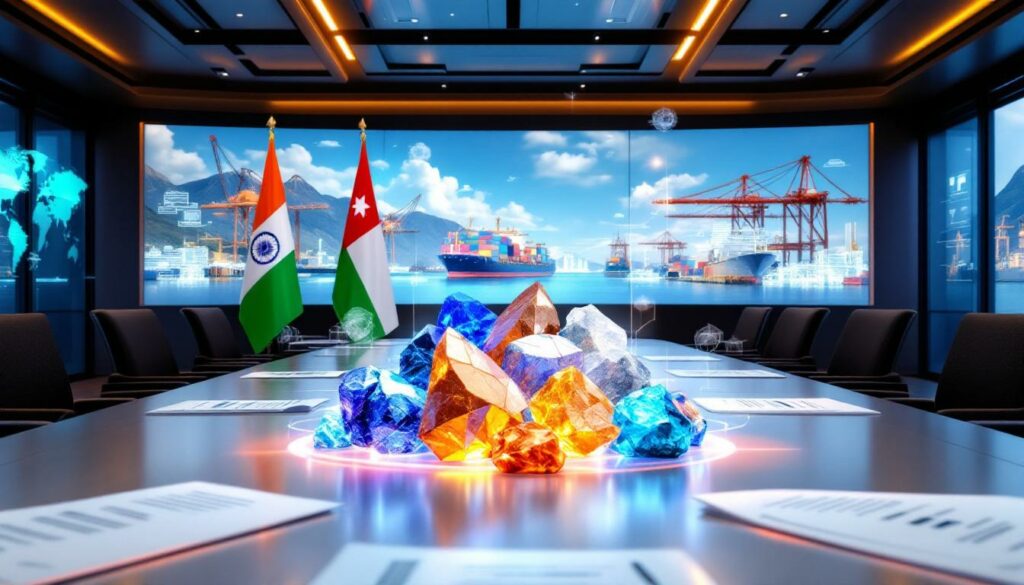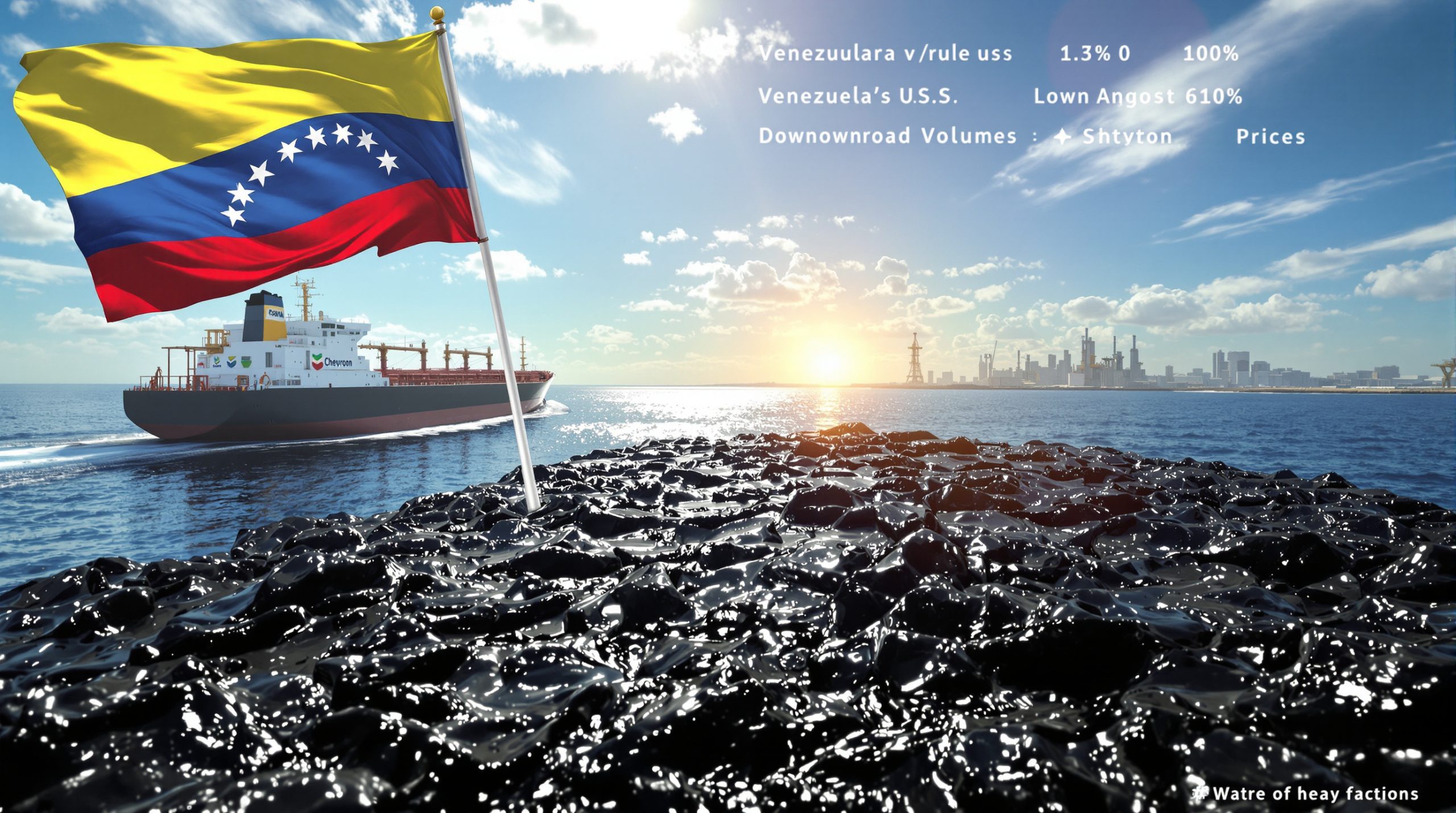What Are Critical Minerals and Why Is India Pursuing Them?
Critical minerals represent a category of raw materials that are essential for economic and national security yet face potential supply disruption risks. These resources have become increasingly important as nations race to secure stable supply chains for their industrial development and technological advancement.
India's strategic focus on critical minerals energy transition stems from its ambitious industrial growth plans and the need to secure resources that underpin key manufacturing sectors. With the country positioned as the world's third-largest automotive market and fifth-largest holder of rare earth reserves, these minerals form the backbone of India's technological and industrial future.
Understanding Critical Minerals in the Global Context
Critical minerals encompass a diverse range of elements including copper, lithium, cobalt, rare earth elements, and numerous others that serve as fundamental components in electronics, renewable energy systems, defense technologies, and advanced manufacturing. Their classification often varies by country, depending on economic importance and supply risk factors.
The strategic significance of these minerals extends beyond their industrial applications. Nations that control critical mineral supplies gain geopolitical leverage, while those dependent on imports may face economic vulnerability. This reality has transformed mineral access from a purely economic concern into a matter of national security.
Supply chain vulnerabilities have become increasingly apparent in recent years, with pandemic-related disruptions highlighting the fragility of global mineral supply networks. Concentration of production in a handful of countries—particularly China's dominance in rare earth processing—has prompted countries like India to develop diversification strategies.
India's Growing Demand for Critical Minerals
India's consumption of critical minerals has witnessed steady growth across industrial sectors, with particularly strong demand from electronics manufacturing, automotive production, and renewable energy development. The country's ambitious goals for electric vehicle adoption and clean energy transition will further accelerate this demand curve.
According to projections, India's critical mineral requirements will increase dramatically through 2047, aligning with the nation's centenary of independence. The automotive sector alone is expected to drive significant growth in copper, lithium, and rare earth consumption as the industry shifts toward electrification.
India faces a stark reality regarding its domestic production capacity versus import needs. Currently, the country relies on imports for over 90% of its copper concentrate demand, creating a precarious dependency that undermines economic security. This import dependency ratio is projected to worsen to 97% by 2047 without strategic interventions.
Among the key minerals facing severe supply constraints, copper concentrate represents a particularly acute challenge. Despite India's status as the fifth-largest holder of rare earth reserves, the country has yet to develop sufficient processing capabilities to leverage these resources effectively.
Why Is India Engaging with South American Nations?
India's outreach to Chile and Peru represents a strategic pivot toward securing long-term access to critical minerals, particularly copper concentrate. This engagement forms part of a broader diversification strategy to reduce dependency on traditional suppliers and establish more resilient supply chains.
South American nations, with their abundant mineral resources and export-oriented economies, offer India an opportunity to forge partnerships based on complementary economic structures. These relationships could potentially evolve beyond simple buyer-seller dynamics into more comprehensive strategic alliances.
India's Critical Minerals Import Dependency
The statistics paint a concerning picture of India's mineral security. The country currently relies on imports for over 90% of its copper concentrate requirements, with projections indicating this dependency could reach 97% by 2047 without strategic intervention. This growing import reliance represents both an economic vulnerability and a national security concern.
Such high dependency exposes India to significant supply security risks, including price volatility, geopolitical disruptions, and potential supply manipulation by producer nations. The economic implications extend beyond direct import costs to include balance of trade considerations, with mineral imports contributing substantially to India's trade deficit.
The COVID-19 pandemic highlighted the dangers of overdependence on imports for critical resources, as supply chain disruptions caused significant challenges for industries reliant on these materials. This experience has accelerated India's push to diversify supply sources and develop strategic partnerships.
Chile and Peru as Strategic Mineral Partners
Chile and Peru stand out as ideal partners for India's critical minerals strategy due to their dominant position in global copper forecast. Chile remains the world's largest copper producer, while Peru ranks among the top three global suppliers. Together, these nations account for approximately 40% of global copper output.
The resource abundance in these South American nations aligns perfectly with India's growing needs. Both countries possess substantial proven reserves that can support long-term supply agreements, providing the stability India seeks for its industrial development plans.
Existing trade relationships between India and these nations, while modest compared to potential, provide a foundation for expanded cooperation. Current bilateral trade flows are dominated by minerals, agricultural products, and pharmaceuticals, with significant room for growth in mineral trade volumes.
The economic structures of India and its South American partners complement each other effectively. While Chile and Peru possess abundant natural resources but limited manufacturing capacity, India offers a massive consumer market and manufacturing capabilities that could eventually absorb value-added mineral products.
How Are Free Trade Agreements Shaping Mineral Access?
Free Trade Agreements (FTAs) have emerged as critical instruments for securing preferential access to mineral resources. These comprehensive economic partnerships go beyond simple tariff reductions to include provisions specifically designed to facilitate mineral trade and investment.
India's ongoing FTA negotiations with Chile and Peru represent a strategic approach to mineral security, embedding resource access provisions within broader economic frameworks. This approach allows India to pursue mineral security objectives while offering reciprocal benefits to partner nations.
Critical Minerals in Trade Negotiation Frameworks
Modern trade agreements increasingly incorporate specific provisions for critical minerals, reflecting their strategic importance. These provisions typically address tariff structures, investment protections, regulatory harmonization, and mechanisms for addressing supply disruptions.
The integration of mineral access provisions in FTA structures requires careful balancing of competing interests. While importing nations seek guaranteed supply and favorable pricing terms, exporting countries aim to maximize value capture and preserve sovereignty over natural resources.
Previous international mineral trade agreements provide useful precedents for India's current negotiations. The Canada-United States-Mexico Agreement (CUSMA), for instance, includes specific provisions to facilitate critical mineral trade across North America, potentially offering a model for India's agreements.
At their core, these negotiations involve delicate balancing of national security considerations with open trade principles. While security concerns push toward guaranteed supply mechanisms, free market principles favor flexible, market-based arrangements. Successful agreements must reconcile these competing objectives.
Tariff considerations represent just one dimension of mineral access negotiations. Non-tariff measures—including licensing requirements, quality standards, environmental regulations, and local content requirements—often pose greater challenges and require more nuanced diplomatic approaches.
Current Status of India-Chile and India-Peru FTA Talks
India's FTA negotiations with Chile represent an expansion of the existing Preferential Trade Agreement, which has been in effect since 2007 but covers a limited range of products. The upgraded agreement aims to incorporate comprehensive provisions for critical minerals, particularly copper concentrate.
"Copper access clauses are being integrated into FTA structures to bypass spot-market volatility," noted an Indian Ministry of Commerce official involved in the negotiations.
The India-Peru FTA discussions, while less advanced, have gained momentum following high-level diplomatic engagements. Both countries have expressed interest in concluding an agreement that would facilitate mineral trade while opening opportunities in pharmaceuticals, IT services, and agricultural products.
Key stakeholders in these negotiations include government ministries responsible for commerce, mining, and foreign affairs, alongside industry associations representing mining companies, metal processors, and end-users of mineral products. Consultations with these stakeholders help ensure agreements address practical industry needs.
The potential scope of these agreements extends beyond simple tariff reductions to include investment protections, technical cooperation, joint ventures in mineral processing, and sustainable mining practices. This comprehensive approach reflects the strategic nature of mineral partnerships in today's global economy.
Compared to India's existing trade agreements, the Chile and Peru FTAs would likely feature more detailed provisions for resource security. While earlier agreements focused primarily on tariff reductions, these new agreements aim to establish more predictable supply frameworks for strategic resources.
What Specific Minerals Is India Targeting?
India's critical minerals strategy targets a range of resources essential for its industrial development, with particular emphasis on copper concentrate and rare earth elements. This focused approach reflects both immediate supply constraints and long-term strategic considerations.
The country's mineral targeting strategy balances current manufacturing needs against future technology trends, ensuring resources are secured not just for today's industries but for emerging sectors that will drive future economic growth.
Copper Concentrate as a Priority Resource
India's focus on copper concentrate reflects its fundamental importance across multiple industrial sectors. The growing supply-demand gap—with over 90% import dependency currently projected to reach 97% by 2047—makes this mineral a top priority for supply security initiatives.
Copper's industrial applications span electrical systems, electronics, construction, transportation, and renewable energy infrastructure. As India advances its manufacturing capabilities and clean energy transition, copper demand will accelerate across these sectors.
The economic importance of copper extends beyond direct industrial uses to its role in enabling technologies critical for India's development goals. Electric vehicles, renewable energy systems, and modern electronics all depend heavily on copper components, making supply security essential for these growth sectors.
Price volatility represents a significant challenge for industrial planning. Copper price insights show considerable fluctuation, with variations of up to 40% within single trading years. This volatility complicates investment decisions and can disrupt manufacturing operations.
Strategic reserves planning has become increasingly important given these supply and price uncertainties. India is evaluating options for establishing strategic copper stockpiles similar to those maintained by China, Japan, and South Korea, which typically aim to cover 90-120 days of industrial consumption.
Beyond Copper: Other Critical Minerals in Focus
While copper dominates current discussions, India's mineral strategy encompasses a broader range of critical resources. Rare earth elements represent a particularly strategic focus, given their applications in high-technology products and India's position as the fifth-largest holder of rare earth reserves.
These elements—including neodymium, praseodymium, dysprosium, and others—serve as essential components in permanent magnets, catalysts, phosphors, and various high-technology applications. Their strategic importance has grown as demand for clean energy technologies and advanced electronics has increased.
Lithium, cobalt, and other battery minerals have also gained strategic importance as India's lithium strategy pursues ambitious electric vehicle adoption goals. The country aims to have 30% of new vehicle sales be electric by 2030, creating substantial demand for these battery materials.
Precious metals with industrial applications—including silver, platinum, and palladium—round out India's critical minerals focus. These metals serve essential functions in electronics, catalytic converters, and various industrial processes, making them strategically important despite their higher value.
India's approach to mineral procurement increasingly emphasizes diversification of supply sources. While South American nations represent important partners for copper, India is simultaneously engaging with Australia for lithium, African nations for cobalt, and developing domestic capabilities for rare earth processing.
How Does This Fit Into India's Broader Industrial Strategy?
India's critical minerals strategy represents a foundational element of its broader industrial development plans. By securing reliable access to essential raw materials, the country aims to strengthen manufacturing capabilities, support emerging industries, and reduce dependency on imported finished goods.
This mineral-focused approach aligns with India's "Make in India" initiative and its ambition to position itself as a global manufacturing hub. Access to critical minerals represents a necessary precondition for developing competitive manufacturing capabilities in high-value sectors.
Automotive Sector Development and Mineral Requirements
As the world's third-largest automotive market, India's vehicle manufacturing sector represents a major driver of mineral demand. The industry consumes substantial quantities of copper, aluminum, steel, and various specialty metals for traditional vehicles, with demand profiles shifting as electrification advances.
India's electric vehicle transition has accelerated in recent years, with government policies encouraging adoption through subsidies, charging infrastructure investments, and manufacturing incentives. This transition significantly increases demand for battery minerals, rare earths for motors, and copper for electrical systems.
Supply chain localization has become a key focus, with government initiatives encouraging domestic production of components previously imported. This localization push extends to mineral processing, aiming to capture more value from raw materials within the domestic economy.
India's competitive positioning against other manufacturing hubs depends partly on securing reliable, cost-effective mineral supplies. Countries like China have leveraged control over critical mineral processing to support manufacturing advantages, a model India seeks to counter through strategic mineral partnerships.
Domestic Processing and Value Addition Initiatives
India has launched ambitious plans to incentivize domestic magnet production, recognizing the strategic importance of this component for motors, generators, and various electronic devices. These incentives include capital subsidies, tax benefits, and priority access to rare earth materials from state-owned mining companies.
The country's rare earth processing capabilities, while currently limited, are receiving significant investment through public-private partnerships. India aims to develop separation and processing facilities capable of producing high-purity rare earth oxides and metals from domestic and imported mineral concentrates.
Value chain integration strategies focus on developing capabilities across the entire mineral processing spectrum—from ore concentration to refining, component manufacturing, and recycling. This integrated approach aims to maximize value capture and reduce dependency on imported intermediate products.
Technology transfer opportunities through trade partnerships represent an important dimension of India's strategy. Agreements with Chile and Peru could potentially include provisions for technical cooperation in mineral processing, enabling India to develop capabilities currently lacking in its industrial ecosystem.
What Are the Implementation Challenges and Opportunities?
Implementing India's critical minerals strategy involves navigating complex logistical, technical, financial, and diplomatic challenges. However, these challenges are balanced by substantial opportunities to strengthen industrial capacity, develop new expertise, and forge valuable international partnerships.
Successful implementation requires coordinated action across government agencies, private sector participants, research institutions, and international partners. This multi-stakeholder approach adds complexity but enhances the strategy's resilience and effectiveness.
Logistical and Infrastructure Considerations
Transportation routes from South America to India involve lengthy maritime journeys, typically 40-45 days from Chilean or Peruvian ports to Indian destinations. These extended supply lines create inventory management challenges and increase vulnerability to shipping disruptions.
Port facilities and handling capabilities represent potential bottlenecks in the mineral supply chain. While India has made significant investments in port infrastructure, specialized facilities for bulk mineral handling remain limited at many ports, potentially constraining import volumes.
Storage and processing infrastructure needs are substantial, particularly for copper concentrate, which requires specialized handling and environmental controls. Current facilities would need expansion to accommodate increased import volumes, with particular attention to environmental safeguards.
The cost implications of long-distance mineral imports include not just direct shipping expenses—estimated at $22-28 per tonne for dry bulk minerals—but also inventory carrying costs, insurance, and potential demurrage charges during port congestion. These costs must be factored into industrial planning and competitiveness assessments.
Environmental and Sustainability Dimensions
Responsible sourcing frameworks have become increasingly important as consumers and regulators focus on the environmental and social impacts of mineral production. India's agreements with Chile and Peru are likely to include provisions ensuring minerals are produced according to recognized sustainability standards.
Environmental standards in extraction and processing vary significantly between countries, creating potential challenges for consistent implementation. India's domestic standards are evolving rapidly, with recent regulations imposing stricter requirements for waste management, water usage, and emissions control.
The carbon footprint of long-distance mineral transportation represents a growing concern as India pursues climate change mitigation goals. Maritime shipping from South America to India generates significant emissions, potentially conflicting with carbon reduction targets unless offset through other measures.
Circular economy approaches to mineral usage offer opportunities to reduce import dependency through increased recycling and more efficient material utilization. India has begun implementing policies to encourage electronics recycling, urban mining, and industrial symbiosis to recover and reuse critical minerals.
What Are the Expected Outcomes of These Consultations?
The mineral consultations between India and its South American partners are expected to yield both immediate supply security improvements and long-term strategic benefits. These outcomes would strengthen India's industrial base while creating new opportunities for economic partnership with Chile and Peru.
Measuring success will require monitoring multiple factors, from direct supply metrics to broader economic and strategic indicators. The full benefits may take years to materialize as agreements are implemented and industrial capacities develop.
Short-term Supply Security Measures
Fixed supply agreements for critical minerals represent the most immediate expected outcome, providing Indian industries with guaranteed access to specific volumes of copper concentrate and potentially other minerals. These agreements would reduce vulnerability to market disruptions and speculative price movements.
"Fixed-price contracts for 5-year terms will shield Indian buyers from LME fluctuations," noted an FTA negotiator involved in the discussions.
Price stabilization mechanisms, potentially including collar arrangements that set maximum and minimum prices, could provide predictability for both suppliers and consumers. These mechanisms would help Indian manufacturers with cost planning while ensuring fair returns for Chilean and Peruvian producers.
Emergency supply provisions might be incorporated into agreements, establishing protocols for maintaining deliveries during disruptions such as natural disasters, labor disputes, or shipping interruptions. These provisions would enhance resilience against short-term supply shocks.
Joint stockpiling possibilities are being explored, potentially involving shared financing and management of strategic mineral reserves. Such arrangements could reduce individual country costs while providing mutual supply security benefits and strengthening diplomatic relationships.
Long-term Strategic Partnership Development
Investment in exploration and extraction projects represents a logical evolution of the mineral partnership, with Indian companies potentially gaining stakes in South American mining operations. Such investments would provide greater supply control while offering capital for expansion and modernization of mining operations.
Joint ventures in processing and refining could eventually allow for higher-value trade, with partially processed materials replacing raw concentrates. These ventures would enable knowledge transfer while creating opportunities for both regions to capture more value from mineral resources.
Technology sharing and capacity building initiatives could benefit all partners, with India offering expertise in IT, automation, and certain processing technologies while gaining knowledge in [mineral exploration importance](https://discoveryalert.com.au/news/mineral-exploration-importance-2025-
Want to Stay Ahead of the Next Major Mineral Discovery?
Discovery Alert's proprietary Discovery IQ model provides instant notifications on significant ASX mineral discoveries, delivering actionable investment opportunities ahead of the market. Explore how major mineral discoveries have led to exceptional market returns by visiting Discovery Alert's dedicated discoveries page and begin your 30-day free trial today.




